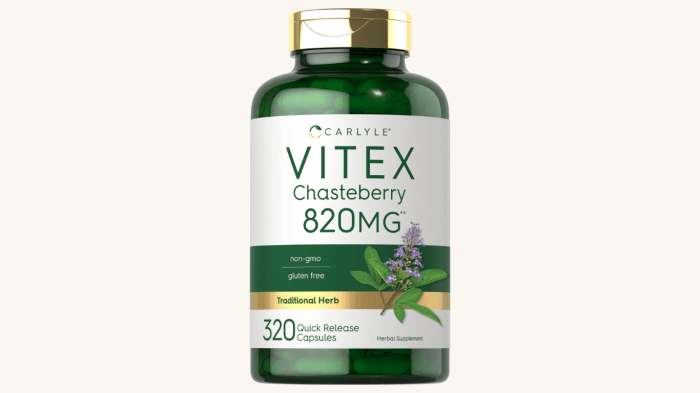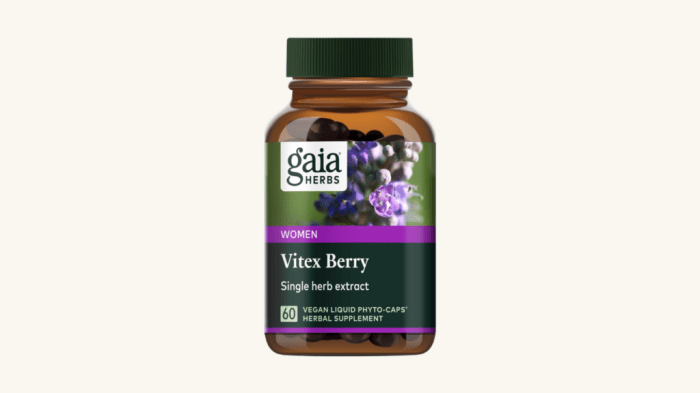Vitex what should you know about it – Vitex, what should you know about it? This comprehensive guide dives into the fascinating world of vitex, exploring its botanical origins, traditional uses, potential health benefits, and important considerations. From women’s health to general well-being, we’ll uncover the nuances of this intriguing herb. We’ll examine how vitex is used, its possible benefits, and the potential risks involved.
Understanding the potential benefits and drawbacks of vitex is crucial for anyone considering incorporating it into their wellness routine. This exploration covers everything from its historical applications to modern scientific research, providing a balanced perspective. We will also compare vitex with other herbal remedies to give a broader understanding.
Introduction to Vitex

Vitex, also known as chaste tree, is a fascinating plant with a rich history of medicinal and cultural use. Its botanical name isVitex agnus-castus*, and it’s a member of the Lamiaceae family, commonly known as the mint family. Historically, this shrub has been used in various cultures for centuries, often playing a role in traditional medicine and spiritual practices.
Its versatility extends beyond its medicinal properties, with potential applications in other areas, including horticulture and even potential culinary uses.
Vitex, often used for various health benefits, is a fascinating herb. While it’s gaining popularity for its potential effects, understanding its role in managing conditions like menstrual irregularities is key. However, if you’re experiencing persistent pain, such as in the Achilles tendon, seeking professional guidance from a medical expert like the ones at achilles tendonitis causes and treatment is crucial.
Ultimately, whether you’re looking at vitex for its potential benefits or other health concerns, consulting with a healthcare provider is always a good idea.
Historical Uses and Cultural Significance
Vitex has a long and diverse history of use across different cultures. In ancient Greece, it was believed to promote chastity and fertility. Traditional healers in various parts of the world have employed Vitex for a range of ailments. Its presence in herbal medicine traditions underscores its perceived importance in maintaining health and well-being. This long-standing tradition of use speaks to the plant’s perceived efficacy and cultural significance in many societies.
Medicinal Uses of Vitex
Vitex is a plant with a range of purported medicinal benefits. Different parts of the plant, such as the leaves, flowers, and berries, are used for various traditional remedies. Understanding the different parts used provides a more nuanced appreciation for the diverse applications of this versatile plant.
Vitex Plant Parts and Traditional Uses
| Plant Part | Traditional Use | Potential Benefits (Note: Scientific evidence is limited and ongoing) |
|---|---|---|
| Leaves | Various traditional remedies, often used as a tea or decoction. | May aid in digestive issues, and possibly have antioxidant properties. |
| Flowers | Often used as a tea or decoction, or in tinctures. | Potential benefits in regulating hormones, and may support reproductive health. |
| Berries | Sometimes used in traditional remedies. | May have antioxidant properties, though further research is needed. |
| Bark | Less commonly used, but in some traditions, it was used for external applications. | Limited scientific data available. |
Note: This table Artikels traditional uses and potential benefits, but rigorous scientific research is still ongoing to confirm these claims. Always consult with a healthcare professional before using any herbal remedy.
Potential Benefits of Vitex
Vitex agnus-castus, often called chaste tree berry, is a popular herbal remedy with a long history of use in traditional medicine. Modern research is exploring its potential benefits for various health concerns, particularly those related to hormonal imbalances. While more research is needed to fully understand its mechanisms and effectiveness, the existing evidence suggests some promising applications.Vitex has garnered interest for its potential to regulate the menstrual cycle and support hormonal balance in women.
Its impact on the endocrine system, particularly the hypothalamic-pituitary-ovarian axis, is believed to be a key factor in these potential benefits. The observed effects can vary significantly from person to person, and further studies are crucial to determine the optimal dosage and application methods.
Vitex, a popular herbal remedy, can have some interesting effects on the body. While generally safe, it’s crucial to be aware of potential side effects, like skin reactions. For example, if you experience an allergic reaction on your face, like redness or hives, allergic reaction on face symptoms can vary, and consulting a doctor is always a good idea.
Ultimately, understanding potential interactions and side effects is key to using vitex safely and effectively.
Vitex for Women’s Health
Vitex is frequently used to address irregularities in the menstrual cycle, including heavy bleeding, painful periods, and irregular cycles. It’s believed to work by modulating the release of hormones, potentially helping to establish a more regular and balanced cycle. However, it’s important to note that individual responses to Vitex can differ. Some women may experience no noticeable changes, while others may find it helpful.
Vitex for Other Health Conditions
Beyond menstrual health, Vitex is also explored for its potential impact on other conditions. Some anecdotal reports suggest it may help alleviate anxiety symptoms and improve sleep quality. However, these claims need robust scientific validation. The effects of Vitex on anxiety and sleep disturbances remain largely unexplored, and more research is necessary to draw definitive conclusions.
Comparison with Other Herbal Remedies
Various herbal remedies are used for similar health concerns. Comparing Vitex with other options can offer insights into potential benefits and risks. The effectiveness of herbal remedies can vary greatly, depending on the individual, the specific condition, and the quality of the product.
| Herb | Potential Benefits | Potential Side Effects |
|---|---|---|
| Vitex | Menstrual cycle regulation, hormonal balance, potential anxiety and sleep support. | Possible digestive upset, headache, breast tenderness, and interaction with certain medications. Individual responses vary. |
| Evening Primrose Oil | Relief from PMS symptoms, menstrual cramps, and menopause symptoms. | Possible skin reactions, interactions with blood thinners. |
| Chamomile | Relaxation and sleep improvement. | Allergic reactions in sensitive individuals, potential interactions with certain medications. |
Potential Side Effects and Interactions
Vitex, while often touted for its potential benefits, isn’t without potential drawbacks. Understanding the possible side effects and interactions is crucial for safe and responsible use. This section delves into the potential risks associated with Vitex consumption, emphasizing the importance of consulting a healthcare professional before incorporating it into your routine.Vitex agnus-castus, like any herbal supplement, can have a range of effects on different individuals.
Vitex, a fascinating herb, has many potential benefits. However, as with any supplement, understanding potential side effects and interactions with medications is crucial. For a broader perspective on lifestyle choices impacting longevity, consider checking out this article on things to stop if you want to live longer. Ultimately, consulting a healthcare professional before incorporating vitex into your routine is always a good idea, especially if you have existing health conditions.
Some people may experience mild discomfort, while others might encounter more significant issues. This section details potential side effects, highlighting the need for caution and professional guidance.
Potential Side Effects
Vitex may cause a variety of mild to moderate side effects in some individuals. These reactions often subside with continued use or discontinuation of the supplement. However, some individuals may experience more serious reactions, warranting immediate medical attention.
- Gastrointestinal issues, such as nausea, vomiting, or diarrhea, are among the most commonly reported side effects. These issues can range from mild discomfort to more severe episodes, requiring medical attention if they persist or worsen.
- Headaches and dizziness are other potential side effects. These symptoms may indicate an adverse reaction, and it is important to monitor for their intensity and duration. If symptoms worsen or persist, medical advice should be sought.
- Changes in mood or sleep patterns are possible. These effects can vary from slight irritability to more pronounced mood swings or difficulty sleeping. If these changes are significant or cause concern, professional consultation is recommended.
Interactions with Medications
Vitex can interact with certain medications, potentially altering their effectiveness or increasing the risk of side effects. It’s crucial to inform your doctor about all supplements, including Vitex, you’re taking to ensure safe medication management.
- Vitex may interact with medications that affect the liver or kidneys. This is because Vitex can influence the way these organs process other substances. A doctor can assess potential risks.
- Vitex may interact with hormonal medications. This is a significant concern because Vitex has some estrogen-like effects. A physician can help assess the potential impact of Vitex on hormonal therapies.
- Vitex can potentially interact with medications for blood clotting or blood sugar control. Consult a healthcare professional for specific interactions if you’re taking these medications.
Allergic Reactions
While allergic reactions to Vitex are less common, they can occur. It is essential to be aware of the signs and symptoms.
- Allergic reactions can manifest as skin rashes, hives, itching, or swelling. These reactions can range from mild to severe, requiring immediate medical attention.
- Difficulty breathing, throat tightness, or a rapid heartbeat can also signal a severe allergic reaction. These are serious symptoms and should prompt immediate medical intervention.
- If you experience any unusual symptoms after taking Vitex, discontinue use and seek immediate medical attention.
Importance of Professional Consultation
Before incorporating Vitex into your health routine, it’s imperative to consult a healthcare professional. They can assess your individual health status, medications, and potential risks.
“Professional guidance is essential to determine if Vitex is suitable for your health needs and to minimize potential risks.”
Potential Side Effects and Precautions Table
| Side Effect | Severity | Possible Cause | Prevention |
|---|---|---|---|
| Nausea | Mild to Moderate | Possible interaction with other medications, or individual sensitivity. | Start with a low dose and monitor. Inform your doctor about all medications and supplements. |
| Headache | Mild to Moderate | Individual sensitivity, interaction with other medications. | Monitor for intensity and duration. Adjust dose or discontinue if necessary. |
| Changes in mood | Mild to Moderate | Interaction with other medications, individual sensitivity, or hormonal imbalances. | Inform your doctor about other medications and supplements. Monitor for mood changes. |
| Allergic reaction (rash, hives, swelling) | Moderate to Severe | Individual sensitivity to Vitex components. | Discontinue use immediately and seek medical attention. |
Dosage and Preparation Methods: Vitex What Should You Know About It
Vitex agnus-castus, a popular herbal remedy, comes in various forms and requires careful consideration of dosage and preparation methods. Proper usage is crucial for maximizing potential benefits while minimizing risks. Individual responses to vitex can vary, so it’s essential to consult with a healthcare professional before starting any regimen.Appropriate dosage recommendations for vitex are contingent upon several factors, including age, health status, and the specific condition being addressed.
For example, dosages for adolescents may differ significantly from those for adults, and individuals with underlying health conditions may require specialized guidance.
Dosage Recommendations
Dosage recommendations for vitex vary widely depending on the specific preparation, the desired effect, and the individual’s needs. A general guideline for standardized extracts is 20-40 mg daily, but this should be individualized. For example, for menstrual cycle support, a lower dosage might be sufficient initially, gradually increasing as needed. It’s crucial to adhere to the instructions on the product label and to consult a healthcare professional for personalized guidance.
Preparation Methods, Vitex what should you know about it
Vitex can be prepared in several ways, each with its own advantages and considerations. Understanding these methods allows for informed choices based on individual preferences and needs.
- Teas: Vitex tea is a common way to consume the herb. Steep 1-2 teaspoons of dried vitex leaves in hot water for 5-10 minutes. The preparation method should be adjusted to individual taste and preferences. Consider that some herbal teas may contain additional ingredients that influence their effects.
- Tinctures: Vitex tinctures offer a concentrated form of the herb. A typical tincture preparation involves extracting the active compounds of vitex in a solvent, such as alcohol. The potency of tinctures varies widely depending on the concentration of the active ingredients. Dosage recommendations for tinctures are often expressed in terms of drops per day, which are generally based on the concentration of the tincture and the individual’s needs.
Carefully follow the manufacturer’s instructions.
- Extracts: Vitex extracts are standardized preparations containing specific amounts of active compounds. They are available in various forms, such as capsules or tablets, and dosage recommendations are typically printed on the label. It’s important to carefully read and follow the instructions provided by the manufacturer.
Recommended Preparation Methods for Different Forms
Different forms of vitex, such as dried leaves, extracts, and tinctures, require different preparation methods. It’s essential to follow the instructions specific to each form.
| Method | Ingredients | Instructions |
|---|---|---|
| Vitex Tea | 1-2 teaspoons dried vitex leaves, hot water | Steep the leaves in hot water for 5-10 minutes. Strain and consume. |
| Vitex Tincture | Vitex tincture, carrier liquid (water or alcohol) | Follow the manufacturer’s instructions regarding dosage and dilution. |
| Vitex Extract | Vitex extract capsules/tablets | Follow the dosage instructions provided on the product label. |
Closing Notes

In conclusion, vitex presents a complex picture. While promising potential benefits exist, particularly for women’s health, it’s essential to approach vitex with caution and consult a healthcare professional before use. Always prioritize informed decision-making and a holistic approach to your health. By understanding the nuances of vitex, you can make well-informed choices about your health journey.




